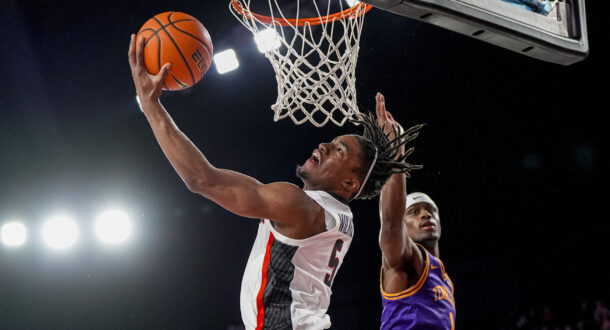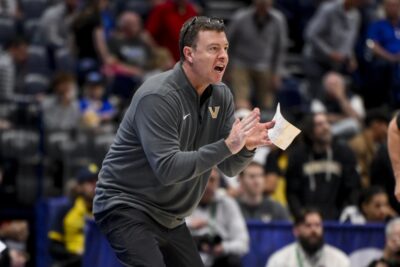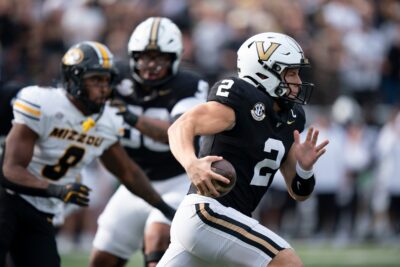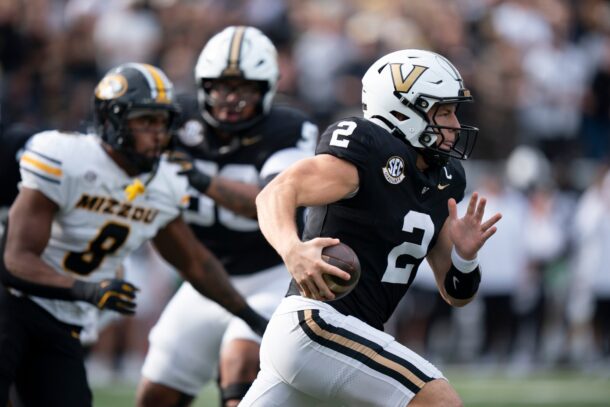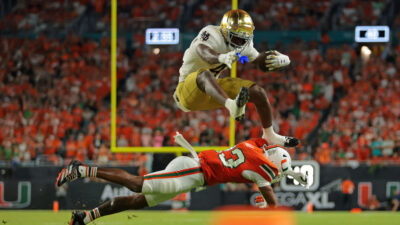Since the SEC formed in December 1932, the conference has produced a collection of amazing running backs, which we’ve chronicled this week.
But which of them can claim “best of the decade?” We give our nine choices below.
1930s: JOHNNY CAIN, ALABAMA
John “Hurri” Cain was the only non-senior starter on Alabama’s 1930 Rose Bowl-winning championship team. He switched from quarterback to fullback in ’31 as Frank Thomas became coach, but also punted, ran the ball and played defense, all with great results.
A three-time All-American — in some ways an even more remarkable feat in the 1930s — Cain also helped Alabama break Tennessee’s 33-game win streak under General Robert Neyland.
1940s: FRANK SINKWICH, GEORGIA
Sinkwich led the NCAA in rushing as a junior and broke the NCAA record for single-season total offense as a senior. A two-time consensus All-American, he also won the Heisman Trophy as the nation’s best player in 1942.
In an era when offensive stats were deflated and defenses occasionally didn’t allow a touchdown all season, Sinkwich rushed for 2,271 yards, passed for 2,331 yards and combined for 60 career touchdowns — 30 rushing and 30 passing.
1950s: BILLY CANNON, LSU
In addition to winning a Heisman Trophy in ’59, Cannon helped LSU to a national championship in ’58.
An all-around athlete, Cannon was the equivalent of Bo Jackson or Herschel Walker in the 1950s, embracing weight-lifting and starring in multiple sports. One of the best players in LSU football history, his combination of speed and strength made everyone believe that each play could turn into something great.
1960s: JERRY STOVALL, LSU
If you want to argue Tucker Frederickson (Auburn), be my guest — the No. 1 overall pick in the 1965 NFL draft was a better all-around back. Both players finished as a Heisman runner-up, and both are members of the College Football Hall of Fame.
Stovall was “just” the No. 2 overall pick of the 1963 NFL draft. A better pure runner, he eventually earned three Pro Bowl selections in the NFL. Plus he had the added pressure of replacing an all-time legend in Cannon, and handled it in style. Stoval also played defensive back, returned kicks and punted for LSU and later became head coach.
1970s: CHARLES ALEXANDER, LSU
A two-time All-American in ’77 and ’78, Alexander set LSU’s records for most yards in a season (1,686) and most yards gained per game in a season (153.3) at the end of an era when running back production in college football was down more than you’d expect.
“Alexander the Great” set all sorts of LSU and SEC records, topped 4,000 career rushing yards and won SEC MVP honors in ’77.
1980s: HERSCHEL WALKER, GEORGIA
His worst season? He ran for 1,616 yards on 5.9 yards per carry as a true freshman in ’80 after starting the year as a third-string fullback. A Heisman Trophy winner in ’82, Walker was a rare three-time consensus All-American who dominated the SEC every year, every time he touched the ball.
Walker is the only player in NCAA history to finish in the top three in the Heisman Trophy voting in three different seasons.
Bo Jackson (Auburn) played in the wrong decade.
1990s: SHAUN ALEXANDER, ALABAMA
Kevin Faulk (LSU) can make a case here as well. If he’d have edged out Alexander, it would give LSU four of the nine best SEC running backs by decade.
Faulk was elite for longer and also contributed on special teams, while Alexander at his best was one of the conference’s best ever. He ran for a school-record 291 yards as a redshirt freshman, including four touchdown runs against LSU.
As a senior, he missed winning the Heisman Trophy when he sprained his ankle against Tennessee late in the year, but still managed to score 23 total touchdowns and lead a Mike DuBose-coached Crimson Tide to an SEC championship.
2000s: DARREN McFADDEN, ARKANSAS
The unquestioned best of the decade, McFadden reintroduced what became known as the “Wildcat” to the country, twice won the Doak Walker Award as the nation’s best running back, finished second in the Heisman Trophy voting in ’06 and ’07 and ran for 4,590 yards in just three seasons.
Oh, and he threw seven touchdown passes to go with 41 rushing and two receiving.
2010s: TODD GURLEY, GEORGIA
Tre Mason (Auburn) is in the discussion here, as is Trent Richardson (Alabama), even though he spent part of his career in the 2000s. Surely Nick Chubb and Leonard Fournette will be once their college careers play out.
But for now, for my money, the No. 10 overall pick of this year’s draft is the best SEC running back of the 2010s. A freshman All-American, Gurley averaged 109.5 yards per game in college and was a Heisman Trophy candidate in the early part of his junior season. Injuries, an early departure and a four-game suspension prevented him from reaching all-time great status.
An itinerant journalist, Christopher has moved between states 11 times in seven years. Formally an injury-prone Division I 800-meter specialist, he now wanders the Rockies in search of high peaks.



